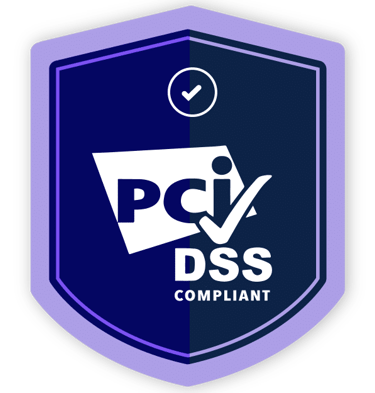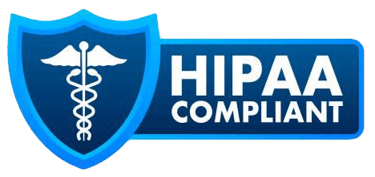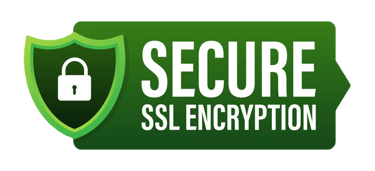Building an ADR Response Toolkit: Templates, Forms, and Sample Narratives
A complete guide to building an ADR Response Toolkit for home health agencies, including templates, forms, and sample narratives aligned with Medicare Conditions of Participation and documentation requirements.
11/21/20254 min read
When a Medicare Administrative Contractor (MAC) issues an Additional Documentation Request (ADR), your home health agency has a limited window—typically 30 days—to submit all required documentation. A single missing form, incomplete narrative, or inconsistent clinical detail may lead to claim denial, delayed reimbursement, or potential audit escalation. To stay compliant and protect agency revenue, home health organizations must be proactive, not reactive. This begins with building a comprehensive ADR Response Toolkit that ensures complete, timely, and high-quality submissions.
A strong toolkit reduces staff stress, strengthens documentation practices, and significantly increases approval rates. More importantly, it aligns your agency with the Home Health Medicare Conditions of Participation (CoPs) and demonstrates to CMS that your documentation supports medical necessity, skilled need, and homebound status.
This article outlines everything you need to create a fully functional ADR toolkit—including checklists, templates, forms, and narrative samples tailored for home health agencies.
Why Every Home Health Agency Needs an ADR Response Toolkit
1. ADRs Are Increasing Each Year
MACs and UPICs are becoming more aggressive with audits. Home health agencies frequently experience ADRs for reasons such as:
Insufficient skilled need documentation
Weak homebound justification
Incomplete or inconsistent OASIS data
Missing or unsigned certifications
Lack of documentation supporting medical necessity
Having a structured toolkit ensures agencies can respond quickly and accurately.
2. CMS Expects Complete, Logical, and Defensible Documentation
Per 42 CFR §484.55 and §484.60, agencies must maintain:
Accurate clinical records
Consistent physician orders
Evidence of skilled intervention
Documentation supporting care plan goals
Timely and compliant assessments
An ADR Response Toolkit supports these requirements.
3. Preventing Denials Protects Agency Financial Stability
Unsuccessful ADRs may lead to:
Lost revenue
ZPIC/UPIC escalations
TPE (Targeted Probe & Educate) reviews
Extrapolation audits
Your toolkit reduces these risks significantly.
Core Components of a Strong ADR Response Toolkit
Your toolkit should be standardized, easy to use, and accessible to your QA, billing, and clinical teams. Below are the essential components.
1. ADR Intake Checklist
The first step is to capture all details from the MAC request:
ADR Intake Checklist Should Include:
Date ADR was received
MAC issuing the request
Deadline for submission
Claim number
Patient name and Medicare number
Episode dates (Start of Care & Certification Period)
Items requested by MAC
Assigned QA reviewer
Assigned clinical reviewer
Date completed
Date submitted
This checklist helps prevent missed deadlines and ensures accountability.
2. Master ADR Documentation Checklist
This checklist ensures all mandatory documents are included in every ADR response.
Required Documentation for Home Health ADRs:
A. Face-to-Face (F2F) Encounter Requirements
F2F documentation within 90 days before or 30 days after SOC
Clear medical necessity statements
Physician signature and date
B. Physician Certification & Plan of Care (POC/485)
Correct diagnosis codes
Medications
Interventions and goals
Frequency and duration
Signed and dated by the physician
C. OASIS Documentation
OASIS-E SOC
Recertification OASIS
Discharge OASIS (if applicable)
Accuracy and consistency with clinical notes
D. Skilled Visit Notes
Skilled nursing
Physical therapy
Occupational therapy
Speech therapy
Home health aide supervision notes (if applicable)
Each note must demonstrate:
Skilled need
Homebound status
Patient progress
Interventions tied to the POC
Measurable outcomes
E. Clinical Narratives / Summary Reports
Initial assessment narrative
RN case conference notes
Episode summary
Reason for continued care
F. Additional Documentation
Lab results or hospital records supporting medical necessity
Wound photos (if ordered and allowed by MAC)
Medication list, reconciliations, high-risk education notes
3. Standardized Forms for ADR Responses
Your toolkit should include easily fillable forms for consistency.
A. ADR Cover Sheet Template
A cover sheet organizes your submission for the reviewer.
Sections Include:
Patient information
Claim number
Summary of what is included
Contact person for follow-up
Table of contents
B. Clinical Summary Template
MACs prefer a summarized explanation of:
Patient condition
Functional impairments
Skilled interventions provided
Progress toward goals
Justification for continued care
A well-written summary strengthens your claim.
C. Homebound Status Template
Homebound justification must meet CMS criteria:
Required elements:
Patient requires assistance or device to leave home
Leaving home requires considerable and taxing effort
Absences are infrequent or for medical care
Example template sections:
Primary limitations (gait instability, dyspnea, pain, weakness)
Secondary factors (cognitive impairment, caregivers unavailable)
Why leaving home is taxing
Why home health care is appropriate
D. Skilled Need Template
Explains exactly why the patient needed skilled services.
Include:
Skilled observations
Teaching and training needs
Complex wound care
New diagnoses or medications
Declining functional status
4. Sample Narratives to Include in Your ADR Toolkit
Strong narratives are critical for ADR success. Below are professionally crafted samples.
Sample 1: Homebound Justification Narrative
“The patient is homebound due to severe osteoarthritis, chronic pain, and unsteady gait requiring a front-wheel walker and caregiver assistance. Leaving the home requires moderate to maximum assistance and causes significant pain and fatigue. The patient only leaves home for medically necessary appointments. These limitations meet Medicare’s definition of homebound status.”
Sample 2: Skilled Nursing Necessity Narrative
“Skilled nursing services are required to monitor and manage the patient’s new diagnosis of Congestive Heart Failure. The patient requires ongoing assessment of fluid status, lung sounds, daily weights, edema, and response to diuretic therapy. Teaching on diet, medication adherence, and early signs of decompensation is necessary to prevent rehospitalization. These interventions require a licensed nurse based on the complexity of the patient’s condition.”
Sample 3: Therapy Necessity Narrative
“Physical therapy is medically necessary to address decreased strength, impaired balance, and gait instability following a recent hospitalization for pneumonia. The patient demonstrates weakness, shuffling gait, and requires verbal and tactile cueing for safe ambulation. A skilled PT is required to implement therapeutic exercises, balance training, fall prevention education, and progressive gait training to restore functional mobility.”
Sample 4: Episode Summary Narrative
“During this certification period, the patient showed gradual improvement in lower extremity strength and endurance but continues to require skilled intervention for safe transfers and ambulation. The patient remains at high risk for falls due to orthostatic hypotension, impaired balance, and cognitive deficits. Continued home health services are necessary to prevent decline, reinforce education, and promote functional independence.”
5. Organizational Tools for Faster ADR Response
A. Pre-Built ADR Packet Organizer
Use standard file structures:
01 Cover Sheet
02 F2F
03 Certification/POC
04 OASIS
05 Skilled Notes
06 Clinical Summaries
07 Supporting Documents
B. Workflow for Staff
Receive ADR → Log it
Assign clinical reviewer
Collect full documentation
QA review for accuracy
Assemble ADR packet
Submit via MAC portal
Track approval/denial
C. Staff Training
Teach clinicians how their notes impact ADR outcomes:
Clear objective data
Skilled interventions only
No duplication
Strong clinical reasoning
6. How This Toolkit Strengthens Compliance with Medicare CoPs
Aligned With:
§484.55 — Comprehensive Assessments
§484.60 — Care Planning, Coordination, and Quality
§484.110 — Clinical Records
Medicare Benefit Policy Manual Ch. 7
Your toolkit demonstrates:
Accurate and timely documentation
Strong alignment between assessment → plan → interventions → outcomes
Clear evidence of homebound status and medical necessity
CMS reviewers appreciate well-organized, consistent documentation.
7. Steps to Build and Implement Your ADR Toolkit
Step 1 — Develop Templates
Create standardized forms for:
Cover sheet
Clinical summary
Skilled need
Homebound justification
Step 2 — Create a Master Checklist
One list for ALL ADRs.
Step 3 — Educate Staff
Review:
Skilled documentation
Compliance standards
What MAC reviewers look for
Step 4 — Test With Mock ADRs
Simulate real audits before they happen.
Step 5 — Track Outcomes
Monitor:
Approval rates
Reasons for denial
Common documentation errors
8. How SummitRidge Consulting Can Help
Building an ADR Response Toolkit from scratch takes expertise. SummitRidge Consulting provides:
Custom ADR toolkits
Fully developed templates and checklists
Sample narratives tailored to your patient population
QA reviews before ADR submission
Denial analysis and prevention strategies
Monthly compliance and documentation support
Whether you need to improve approval rates, strengthen clinician documentation, or prepare for surveys and audits, SummitRidge offers end-to-end solutions to protect your revenue and keep your agency compliant.

Some or all of the services described herein may not be permissible for HealthBridge US clients and their affiliates or related entities.
The information provided is general in nature and is not intended to address the specific circumstances of any individual or entity. While we strive to offer accurate and timely information, we cannot guarantee that such information remains accurate after it is received or that it will continue to be accurate over time. Anyone seeking to act on such information should first seek professional advice tailored to their specific situation. HealthBridge US does not offer legal services.
HealthBridge US is not affiliated with any department of public health agencies in any state, nor with the Centers for Medicare & Medicaid Services (CMS). We offer healthcare consulting services exclusively and are an independent consulting firm not affiliated with any regulatory organizations, including but not limited to the Accrediting Organizations, the Centers for Medicare & Medicaid Services (CMS), and state departments. HealthBridge is an anti-fraud company in full compliance with all applicable federal and state regulations for CMS, as well as other relevant business and healthcare laws.
© 2025 HealthBridge US, a California corporation. All rights reserved.
For more information about the structure of HealthBridge, visit www.myhbconsulting.com/governance
Legal
Resources
Based in Los Angeles, California, operating in all 50 states.






